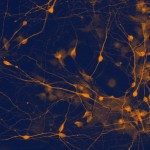Link to Pubmed [PMID] – 27040654
Link to DOI – 10.1038/ncomms11157
Nat Commun 2016 Apr; 7(): 11157
Associating an odorant’s chemical structure with its percept is a long-standing challenge. One hindrance may come from the adoption of the organic chemistry scheme of molecular description and classification. Chemists classify molecules according to characteristics that are useful in synthesis or isolation, but which may be of little importance to a biological sensory system. Accordingly, we look to medicinal chemistry, which emphasizes biological function over chemical form, in an attempt to discern which among the many molecular features are most important for odour discrimination. Here we use medicinal chemistry concepts to assemble a panel of molecules to test how heteroaromatic ring substitution of the benzene ring will change the odour percept of acetophenone. This work allows us to describe an extensive rule in odorant detection by mammalian olfactory receptors. Whereas organic chemistry would have predicted the ring size and composition to be key features, our work reveals that the topological polar surface area is the key feature for the discrimination of these odorants.

